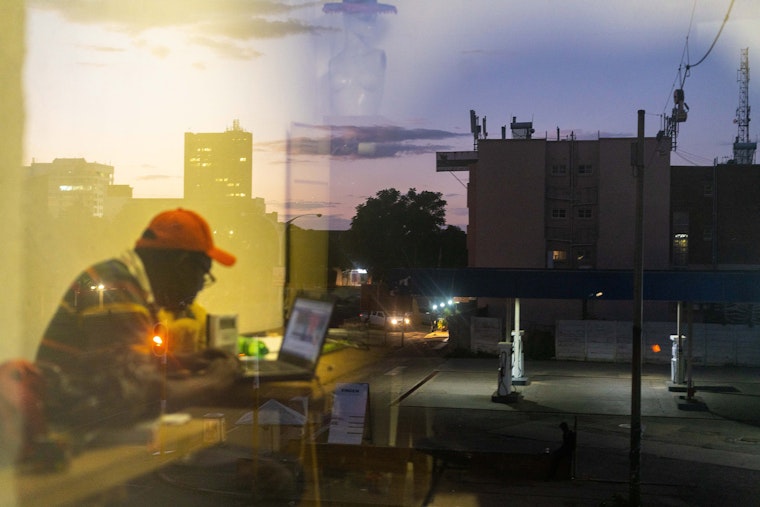
Credible, fact-checked news has never been more valuable. Indeed, for people around the world, a story that provides truthful information about COVID-19 can be life-saving.
Since the pandemic took hold on a global scale, in early 2020, news sites have seen an unprecedented surge in visits. Many news sites have self-consciously taken a proactive role in protecting the public by countering disinformation about the virus.
Some political leaders, meanwhile—desperate for a scapegoat to excuse, in many cases, their own failures to respond adequately to the pandemic—have attacked journalists who report truthfully about the spread of COVID-19, cynically accusing them of filing stories only intended to score political points.
Readership at News Sites Is Up—but Revenue Is Down?
Yes. This contradiction is illustrated by the New York Times’ first quarterly report for 2020. The paper saw an unprecedented 10 percent boost in total subscriptions and a doubling of the site’s traffic. Nevertheless, the Times’ report warned of a 55 percent slump in ad revenue for the second quarter of 2020, reflecting the impact of pandemic-related closures on the consumer businesses that drive its ad sales, as well as economic anxieties about the future.
Smaller, independent outlets around the world are seeing boosted audiences, too. For example, the Jordan-based independent news site 7iber, a grantee of the Open Society Foundations, has seen an 85 percent increase in page views from mid-March to mid-April 2020. Much of this traffic trends towards articles like one the site recently produced on the science of ventilators, editors say.
How Is This Affecting Journalists?
Despite the surge in news consumption, media outlets are closing—and terminating staff at unprecedented rates.
In the United States, for example, the New York Times counted 36,000 layoffs across the sector just in April of 2020. Since then, the Poynter Institute has tallied more than 200 announcements of closures and firings at media companies across the country, from small papers and radio stations to large and well-established publishers that run dozens of publications. Other countries have been similarly affected: Australia lost over a hundred regional newspapers at a stroke in May, leaving large swathes of the country at risk of becoming a “news desert.”
Financial pressures can compound those challenges already faced by media in the Global South, making them vulnerable to offers of funding from state and business interests that seek to undermine independent news coverage. To survive in this environment, news organizations must find innovative ways to bring in revenue. In many cases, that means turning directly to their audiences for support—through crowdfunding, subscriptions, and membership programs.
Are Attacks on Independent Media Increasing?
Yes. Some leaders have used the state of emergency tied to the pandemic to put restrictions on press freedoms that go beyond what the public health crisis requires, according to the Committee to Protect Journalists, an Open Society grantee.
In dozens of countries, police have detained and arrested journalists—often for the alleged crime of spreading “fake news.” In addition, journalists report facing physical attacks from government security forces. The harassment, arrests, and attacks appear to be designed to repress critical reporting and intimidate any reporter who might consider filing a story that portrays the government’s response to the virus in a negative light.
Examples of the sort of intimidation reporters face for their coverage of the pandemic span the globe:
- In South Africa, police beat Paul Nthoba, a reporter, and later accused him of violating the 2002 Disaster Management Act after he photographed security forces aggressively enforcing the COVID-19 lockdown.
- In Myanmar, authorities recently sentenced news editor Zaw Ye Htet to two-years in prison over his outlet’s COVID-19 coverage. Zaw Ye Htet was charged with spreading information that could “cause alarm or fear to the public.”
- In Nepal, following the government’s introduction of COVID-19 containment measures in March 2020, at least four journalists have been detained by the government—while others have been beaten—for their coverage of the pandemic.
- In Rwanda, a journalist with Ishema TV was detained and charged with violating the COVID-19 lockdown policy.
- In Malaysia, the journalist Wan Noor Hayati Wan Alias faces up to a six-year sentence—allegedly for causing a public panic—because of a report she wrote criticizing the government’s decision to allow a cruise ship with Chinese tourists to dock and disembark at the coastal city of Penang.
How Has Independent Media Helped Fight the Pandemic?
Around the world—and in the face of major threats—independent media has played a crucial role in communicating facts about COVID-19 that help prevent the spread of the virus and provide crucial info about what you should do if you are infected.
They are helping to counter what UN leaders point to as a dangerous “disinfodemic” that undercuts expert advice and fuels the pandemic. Social media platforms in particular have been filled with an onslaught of misinformation and disinformation that has spread as fast as the virus itself.
This misinformation can be especially deadly in countries with poor access to credible and trustworthy information. In Iran, for example, the national coroner revealed that, in a little more than a month, 728 Iranians had died from drinking methanol, under the mistaken belief it would provide immunity to the virus.
Demand for trustworthy information around COVID-19 is driving audiences to credible media sources. In turn, many of these organizations are seizing the chance to engage these new readers and build lasting loyalties:
- In Serbia, KRIK, an independent media outlet that is an Open Society grantee, made debunking COVID-19 disinformation a priority, and launched the live blog Raskrikavanje. The blog was the most visited section of the site in March and April, amid an already huge surge in traffic.
- In Brazil, Agência Mural [in Portuguese], another Open Society grantee, has worked with a network of 70 other local correspondents to document the pandemic in some of the poorest and most marginalized neighborhoods in São Paulo. Additionally, Mural is responsible for Em Quarentena (Quarantined), a popular and daily 8-minute WhatsApp podcast.
- In South Africa, the reader-supported Daily Maverick set up a dashboard to compile COVID-19-related data by province, drawing on accredited sources to visually and cleanly display the situation.
Read more
Independent Journalism
Forever No More: From Destruction to Rebirth, the Critical Need for Supporting Syrian Journalism

As Syria rebuilds after the overthrow of its dictator Bashar al-Assad, an independent journalism outlet has been helping to build the public sphere to ensure Syrians are guaranteed the rights and freedoms they deserve.
Evidence for Accountability
Q&A: How Open Source Evidence Is Challenging Abuses, Atrocities, and Disinformation

Bellingcat has pioneered the use of open-source research to expose human rights abuses, atrocity crimes, and high-level corruption and other criminal activities involving governments, gangs, and other illicit actors.
Reporting on Africa
Changing Global News Coverage of Africa Is About Acknowledging the Continent’s Rightful Place in the World

The Global Media Index for Africa assessed and ranked how 20 of the world’s most influential news providers cover the continent. The index’s creators hope it will help ensure Africa’s full story is told globally.